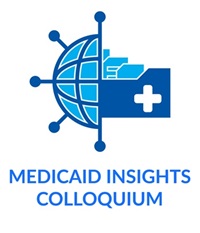
Health economist K. John McConnell, Ph.D., MS, MA, founded CHSE in the OHSU School of Medicine Department of Emergency Medicine in 2011. His research focuses on state health policy, behavioral health, and quality improvement. Today, the team includes faculty members with PhDs in economics and statistics, affiliated physician-scientists, and a robust research staff with diverse academic backgrounds and experience. Meet our team. Learn more about CHSE.




Advancing health and policy through data-driven research
At the Center for Health Systems Effectiveness (CHSE), we bridge data and policy to improve health outcomes and access, with a focus on Medicaid and vulnerable populations. Our research drives actionable solutions that help policymakers and healthcare leaders make informed decisions.
Leveraging Medicaid expertise
CHSE is nationally recognized for Medicaid policy expertise. We leverage the national Transformed Medicaid Statistical Information System (T-MSIS) Analytic Files (TAF) dataset and additional state Medicaid claims data to produce rigorous, policy-relevant research.
Linking data
By linking Medicaid claims with data on births, deaths, child welfare, incarceration, psychiatric hospital stays and climate indicators, we reveal intersections between health, social systems, and the environment—and opportunities for positive change.
Pursuing excellence
We produce objective, credible, and rigorous research that meets the highest academic and industry standards. We write clear and accessible reports so that complex analyses are useful to many audiences.
Facilitating dialogue
Our Medicaid Insights Colloquium brings together national experts to discuss pressing Medicaid research and policy issues. Advisory boards contribute valuable external perspectives, while our work at OHSU fosters interdisciplinary collaboration, strengthening the health services research community.
Valuing partnerships
Our research is supported by the National Institutes of Health, the Robert Wood Johnson Foundation, the Commonwealth Fund, Arnold Ventures, and the Silver Family Foundation. We also partner closely with the states of Oregon and Washington through contracts supporting state health policy initiatives.
Connect with us
OHSU Center for Health Systems Effectiveness
3030 S. Moody Avenue
Portland, Oregon, 97201
Information: CHSE-info@ohsu.edu
Media Relations: news@ohsu.edu

Stephan Lindner, Ph.D., CHSE faculty member
Medicaid Waivers
States increasingly use Medicaid Section 1115 waivers to test new approaches to coverage, care delivery, and payment reform. CHSE partners with states to evaluate these innovations—examining how waiver policies affect healthcare access, quality, and outcomes.

Hyunjee Kim, Ph.D., CHSE faculty member
Care for Older Adults and Complex Populations
CHSE evaluates new models to better coordinate care for low-income adults covered by both Medicare and Medicaid—from care that makes it possible for more people to live at home to nursing home care.

Maria Rodriguez, M.D., MPH, affiliated faculty member
Reproductive Health
CHSE is engaged in multiple studies of policies aimed at extending coverage for prenatal and postpartum care, expanding access to contraceptive services and integrating behavioral and maternal healthcare to improve outcomes for parents and infants.

Jane Zhu, M.D., MPP, MSHP, affiliated faculty member
CHSE tests the impact of Medicaid policies on access to mental health and substance use treatment and explores the intersection of behavioral health and the criminal justice system.